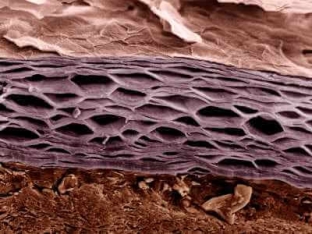Rashes and various manifestations on the skin – it is always an alarming signal that can speak both of a disease of the skin and of the pathology of other organs and systems. Treatment of any disease begins with finding and eliminating its cause. In addition, there is such a thing as symptomatic therapy aimed at eliminating the manifestations of a particular pathology. In cosmetology, one more direction can be distinguished, focused on the local treatment of skin diseases – corneotherapy. The peculiarity of this method lies in the fact that all its products work with the barrier systems of the skin, that is, with its stratum corneum.
Corneotherapy – effective direction of modern cosmetology
The stratum corneum is the most important barrier system of our skin, which is largely responsible for the implementation of its protective function. For the first time, the scientist Kligman spoke about corneotherapy in 1964, when in his work "Biology of the stratum corneum" he stated that the surface layer of the epidermis – these are not just dead and keratinized cells, but an active and dynamic tissue that has a precise structure and performs clear functions.
Corneotherapy is based on the assumption that if the stratum corneum is healthy and intact, such skin will be well protected from the influence of mechanical, chemical and many other damaging environmental factors.
Corneotherapy:
- which skin structures are affected by corneotherapy preparations;
- what is part of the preparations used in corneotherapy;
- requirements for cosmetics created according to the principles of corneotherapy.
What skin structures are affected by corneotherapy drugs
The stratum corneum has a unique structure: it consists of keratinized scales, which are the "bricks" of the skin. skin barrier, as well as from lipid layers, which, like cement, connect these bricks together. & nbsp; If the integrity of the lipid layer is violated – the permeability of the skin increases, it becomes vulnerable, dry and irritated. Using corneotherapy as part of the complex treatment of skin diseases, it is possible to reduce all these manifestations and significantly improve the condition of the skin. Corneotherapeutic preparations compensate for the deficiency of those substances that are responsible for the integrity of the stratum corneum, its normal properties and functioning.

What is part of the preparations used in corneotherapy
Corneotherapeutic preparations contain physiological lipids, which in their structure and composition correspond to the lipids of the stratum corneum and are able to compensate for their shortage, restoring damage to the stratum corneum. These lipids include ceramides, phospholipids, and plant sterols. Thus, the composition of drugs used in corneotherapy includes:
- a natural moisturizing factor that is able to maintain the necessary level of skin hydration;
- lipid compositions, which should correspond to the lipids of the stratum corneum in their composition, and also, if possible, form similar spatial structures;
- some unsaturated fatty acids.
Requirements for cosmetics based on the principles of corneotherapy
An important condition of cosmetics used in corneotherapy is the absence in its composition of products that can inhibit and slow down the normal processes of tissue regeneration, as well as the minimum content of substances that irritate the skin. In this regard, corneotherapeutic products should not contain:
- synthetic and natural fragrances;
- acetone and alcohol, which wash out hydrolipidic structures from the surface of the skin;
- mineral oils and non-volatile silicones, which in high concentrations have an occlusive effect, lead to prolonged overhydration of the stratum corneum and slow down the regeneration process;
- emulsifiers that can disrupt the structure of intercellular lipid layers.
Cosmetics based on the principles of corneotherapy have a positive effect on the skin, making it healthier, fresher and younger.
The high efficiency and safety of such cosmetics allows the use of root therapy not only for the treatment of skin diseases, but also for their prevention.







Add a comment